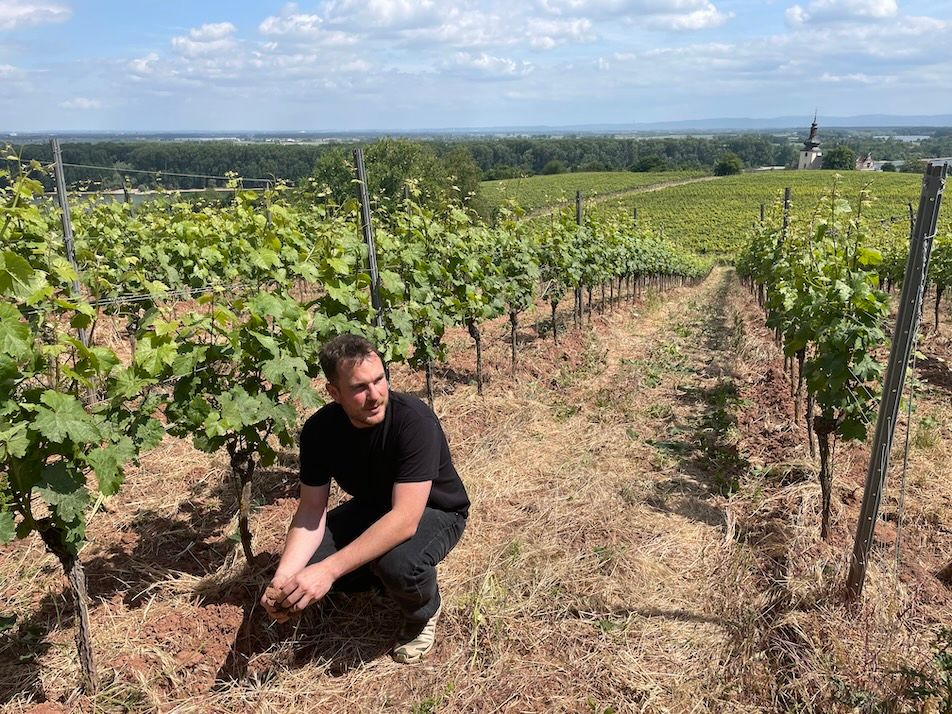A 2011 Super Tuscan, a fine Rioja, a bottle of LBV port – nice wines indeed but these were the secret stash of the lucky punters who had smuggled in their own wine. So how come the wine offering was so fallow this year at the Glastonbury Festival?
Wine and music go hand-in-hand, so it’s a surprise that wine and music festivals have always had a difficult relationship. Do punters avoid wine because the selection is so poor, or is the selection so poor because festivalgoers prefer to guzzle beer and cider?
So in the name of research I donned my sunhat (and packed the Rennies) and headed to this year’s Glastonbury Festival to discover what wines were available on site, what they tasted like and whether punters were actually drinking them.
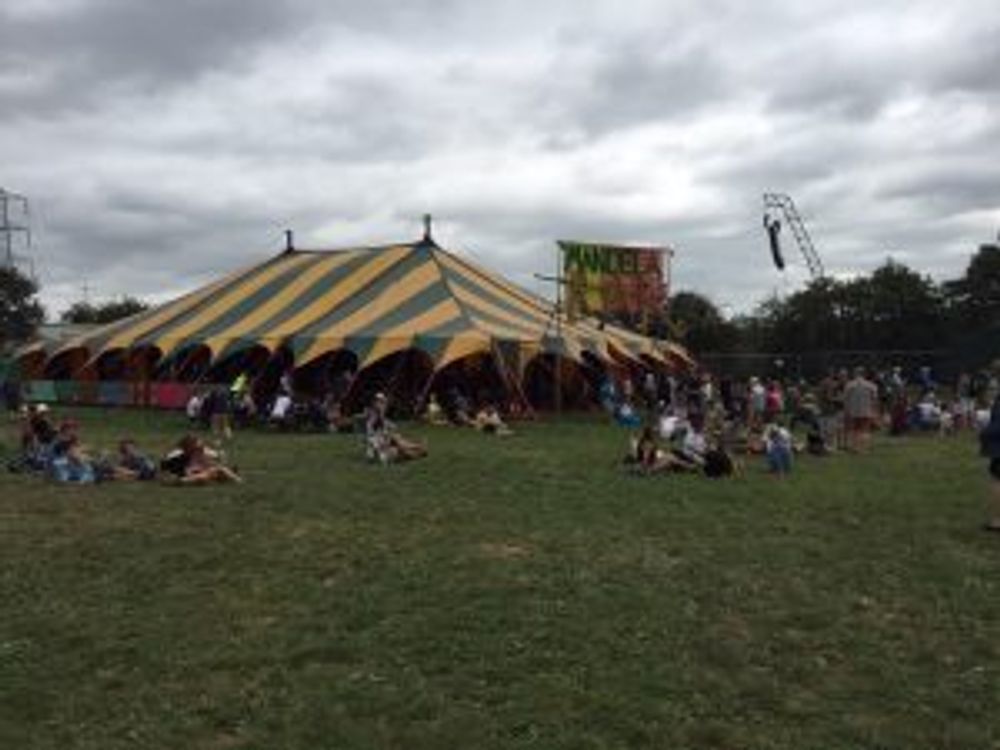
The legendary Mandela bar
The first port(s) of call were the festival’s main bars – these tents scattered across the huge site are operated by the Workers Beer Company and each bar is individual in style if not menu. Taking in The Cockmill, The Avalon Inn, West Holts Bar (which hosts its own pub quiz, in case Radiohead isn’t your thing) and the legendary Mandela Bar, there were very few people ordering the 187ml serves of wine of offer. But it was Echo Falls.
Having said that the lager on offer across the festival was Carlsberg (can parallels be drawn between Echo Falls and Carlsberg? probably) and people were drinking that by the bucketful.
Just to be clear Echo Falls isn’t badly-made wine, it’s just very generic, middle-of-the-road and in the case of the rosé far too sweet.

Simply put, there’s better big brand, single-serve wine available that may well appeal to more people.
Leaving the main bars – and the Californian blush – behind and following a tip-off about a local winemaker knocking out his English wine in the William’s Green market area, I headed there. The Pennard Organic Wine stall wasn’t difficult to find – a large hand-painted sign proclaiming ‘CHILLED LOCAL ORGANIC WINE’ drew me in like a moth to a lightbulb.
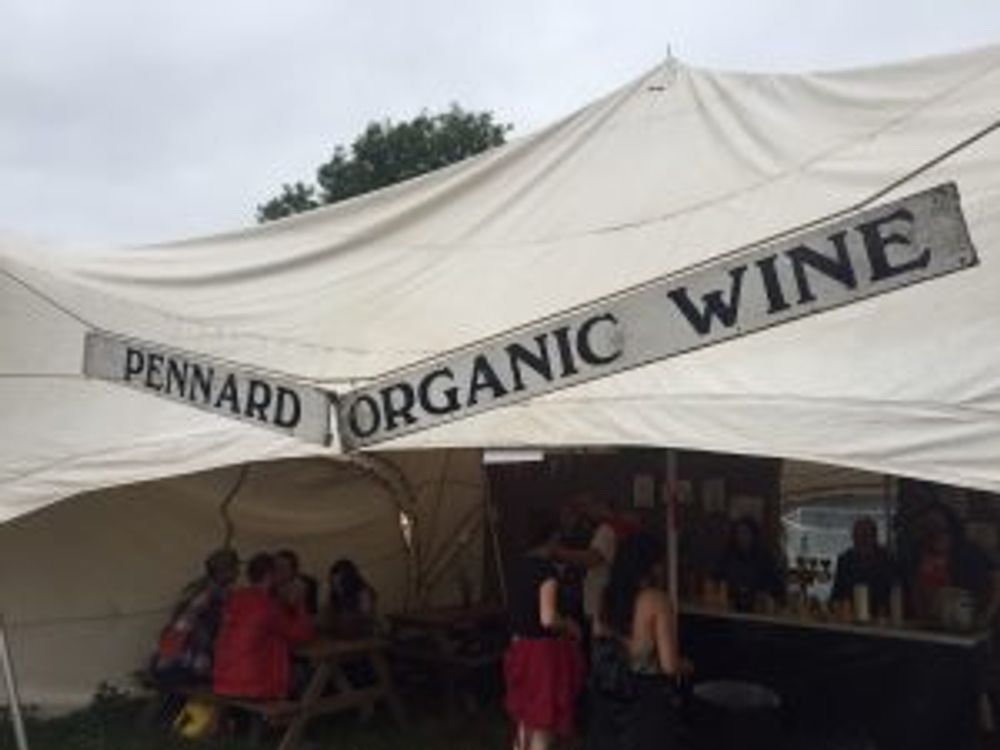
The bar was busy with folk knocking back glass upon glass of wine, fruit wine, mead and cider – it was proper West Country in its atmosphere and carefree vibe. I ordered a glass of the ‘English white wine’ and sought out winemaker Hugh Tripp to find out exactly what I was drinking. Turns out it was a Seyval Blanc-Orion blend grown on vineyards “about half a mile down the road”. You can’t get much more local than that.
The wine itself was what you’d call rustic. With a sherry tang from the oxidation (little SO2 is used) and a noticeable cider apple character throughout, it was as far away from the clinical, wine-by-numbers Echo Falls as you could get. Tripp takes hands-off winemaking to a new level; he doesn’t spray, claims not to even step foot in the vineyard until harvest, and once pressed simply leaves the wine to mature until bottling. It’s a risky approach, but the wine was enjoyable, if different and somewhat chewy!
Pennard was the only local (and indeed only English) wine on site, but there was another outfit dealing exclusively in wine with three bars in the main market areas. These bars were a thing of legend during the late 1990s and early 2000s. Before the festival expanded its late night offering and opened up areas for afterhours raving and partying, revellers made a beeline for the huge inflatable wine bottles which sit atop each bar as it was here that impromptu parties took place.
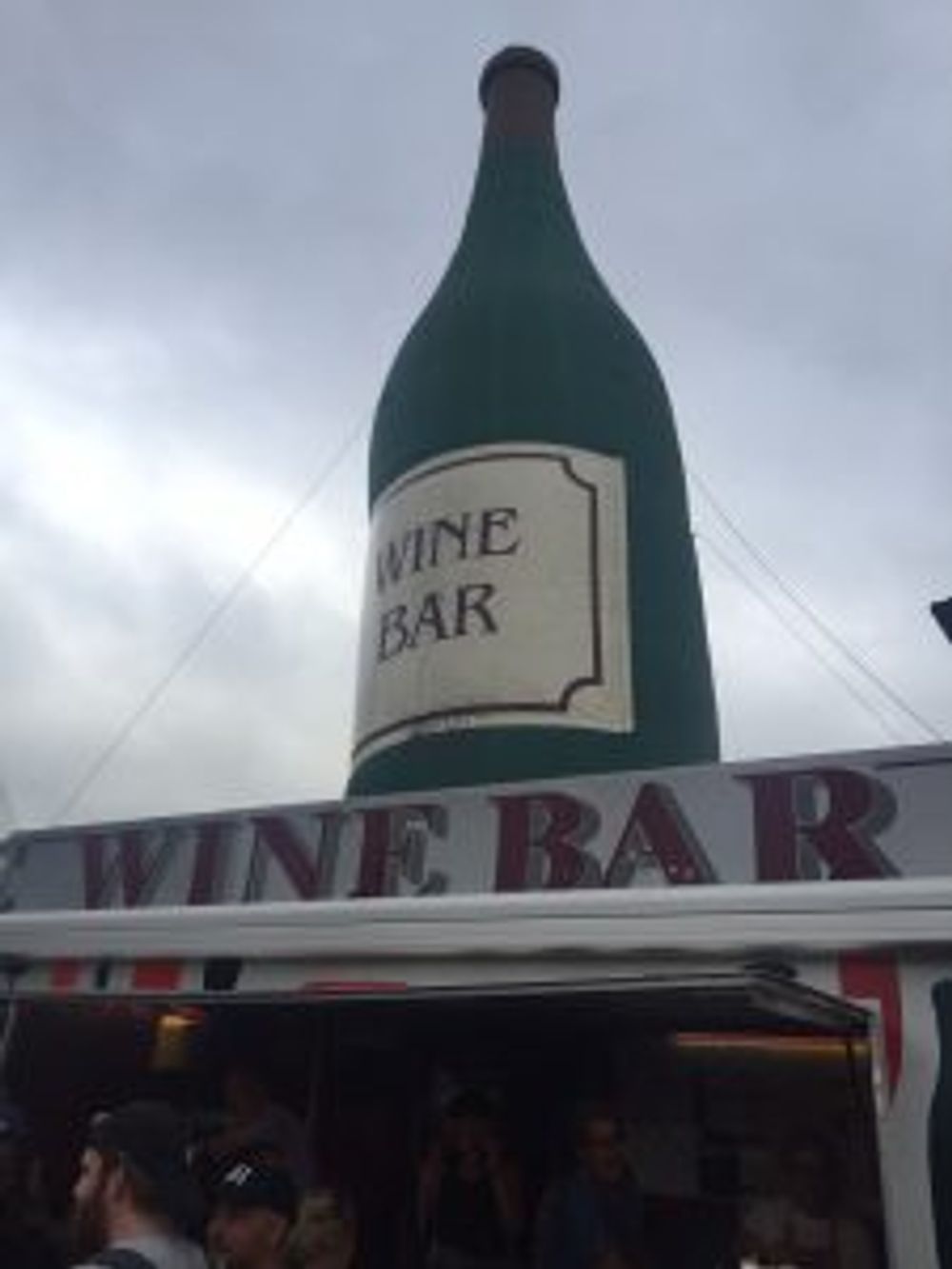
Due in part to the wine on offer, but mostly because of the sound system and loud, loud music, you’d find some serious rug cutting (mud cutting?) here well into the night. The good old days of the wine bar trance session may be over now, but the bars still exist and were busy throughout the weekend.
Their offering wasn’t huge (Chilean Merlot, South African Chenin, and a hot spiced red, plus Louis Roederer bubbly) but a huge improvement on the main bars, both in terms of quality and interest. The Chenin was crisp with pear and confected apple characters, the Merlot full-bodied and silky with a smack of forest fruit. It was too balmy to attempt the hot, spiced red.
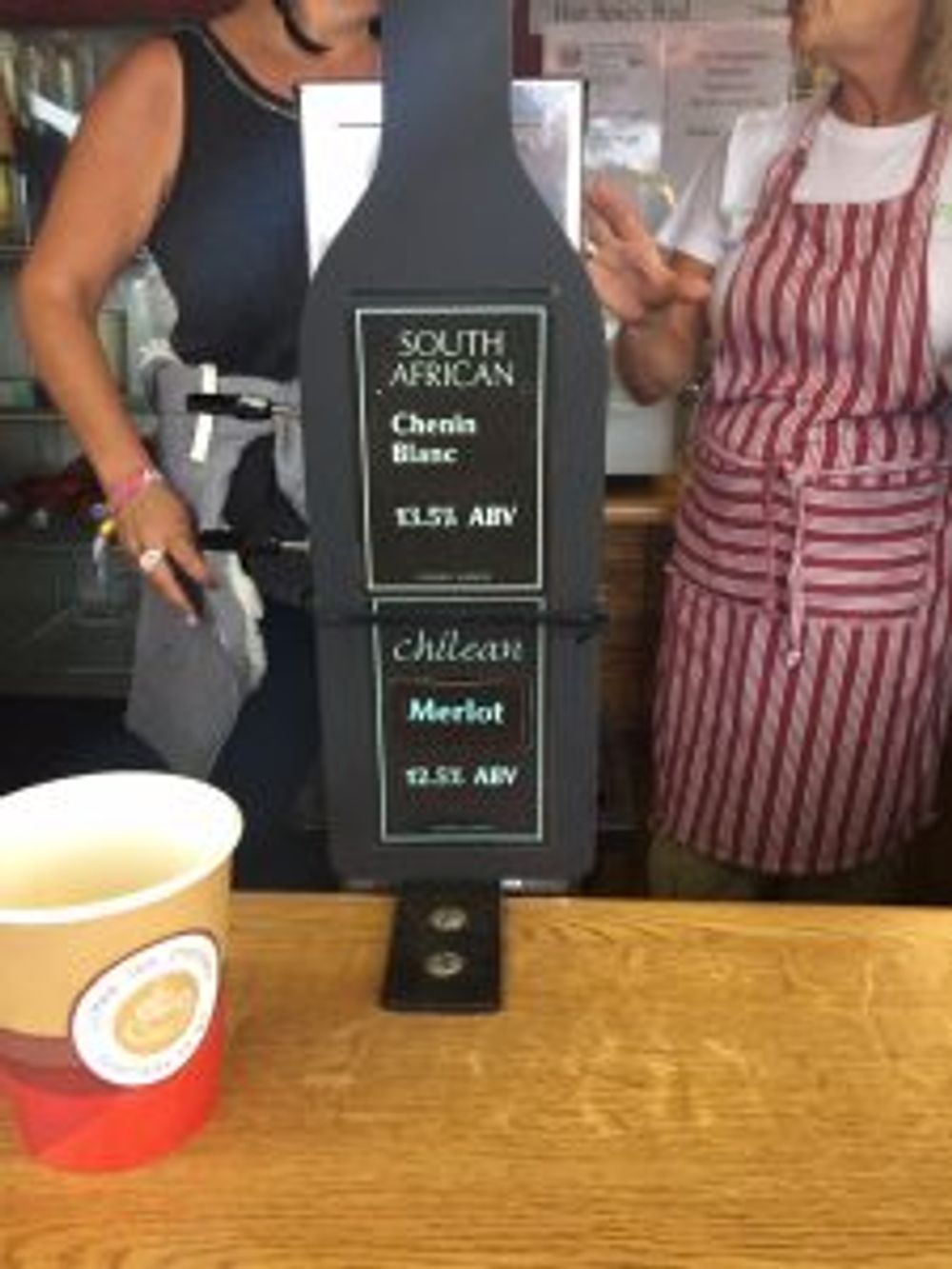
It was away from the licensed bars that the most interesting wine was being consumed, however. Watching Royal Blood on the Pyramid Stage, the couple next to me were sipping a Rioja Reserva from tin mugs – they’d decanted 1.5 litres-worth into a plastic bottle to bring into the festival – and I spotted a group of young men sharing a bottle of Cockburn’s LBV port at the late-night Strummerville area on the final night. It brought a tear to my eye.
Bringing in your own wine from home seems to be the way forward, and not only for the masses – David and Victoria Beckham were snapped backstage supping Sassicaia 2011.
While no one expects super Tuscans and first growths to be available at events like this, on the whole the offering was pretty lacklustre and that’s not because wine lovers don’t attend music festivals, as evidenced by the number of people brining in their own stash from home.
There’s certainly an opportunity here to sell more wine and more decent wine, someone just needs to get their offering, pricing and marketing right, and perhaps bang out some late night trance anthems too for the old timers.








